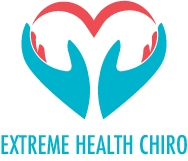Bankruptcy
Bankruptcy is a legal process that provides individuals and businesses with a means to address overwhelming debt and find financial relief. There are several different types of bankruptcy, each designed to serve specific needs and circumstances. Understanding these various types is essential when considering bankruptcy as a potential solution to financial challenges. Here are the main types of bankruptcy in the United States:
Chapter 7 Bankruptcy: Liquidation
- Also known as “straight bankruptcy” or “liquidation bankruptcy,” Chapter 7 is the most common type of bankruptcy for individuals.
- In Chapter 7, a court-appointed trustee sells non-exempt assets to pay off creditors, and most unsecured debts are discharged.
- It is typically suitable for individuals with limited assets and overwhelming unsecured debts like credit card balances and medical bills.
- The process is relatively quick, usually taking a few months to complete.
Chapter 13 Bankruptcy: Repayment Plan
- Chapter 13 bankruptcy is often referred to as the “wage earner’s plan.”
- Individuals with a regular income can create a structured repayment plan over three to five years to catch up on missed payments while keeping their assets.
- It is suitable for those facing foreclosure, needing to repay tax debts, or having too much income to qualify for Chapter 7.
- Priority debts, such as child support and alimony, must be paid in full, while unsecured debts are often partially discharged.
Chapter 11 Bankruptcy: Business Reorganization
- Chapter 11 is primarily used by businesses, but it can also be utilized by high-income individuals with substantial debts.
- It allows for the reorganization of a business’s debts while it continues its operations.
- Debtors propose a plan to restructure and repay creditors, which must be approved by a majority vote.
- Chapter 11 is a complex process, often requiring significant legal and financial resources.
Chapter 12 Bankruptcy: Family Farmer Or Fisherman Reorganization
- Chapter 12 is specifically designed for family farmers and fishermen with regular income.
- It provides a streamlined and cost-effective process for restructuring and repaying debts.
- Debtors create a repayment plan, and like Chapter 13, it spans three to five years.
- Chapter 12 offers more favorable terms for agricultural and fishing businesses, recognizing the unique financial challenges they face.
Chapter 9 Bankruptcy: Municipal Bankruptcy
- Chapter 9 bankruptcy is reserved for municipalities, such as cities, towns, and counties.
- It allows these entities to restructure their debts and continue providing essential services to their communities.
- A court-appointed trustee oversees the process, and a plan is created to address the municipality’s financial challenges.
It’s important to note that bankruptcy laws can vary by jurisdiction and may change over time. Additionally, eligibility and the specific process for each type of bankruptcy can depend on individual circumstances. Consulting with a knowledgeable bankruptcy lawyer from a firm like Therman Law Offices, LTD is crucial when considering bankruptcy as an option, as they can provide tailored advice and guide you through the complex legal proceedings. Ultimately, the choice of which type of bankruptcy to pursue depends on your unique financial situation and goals.

